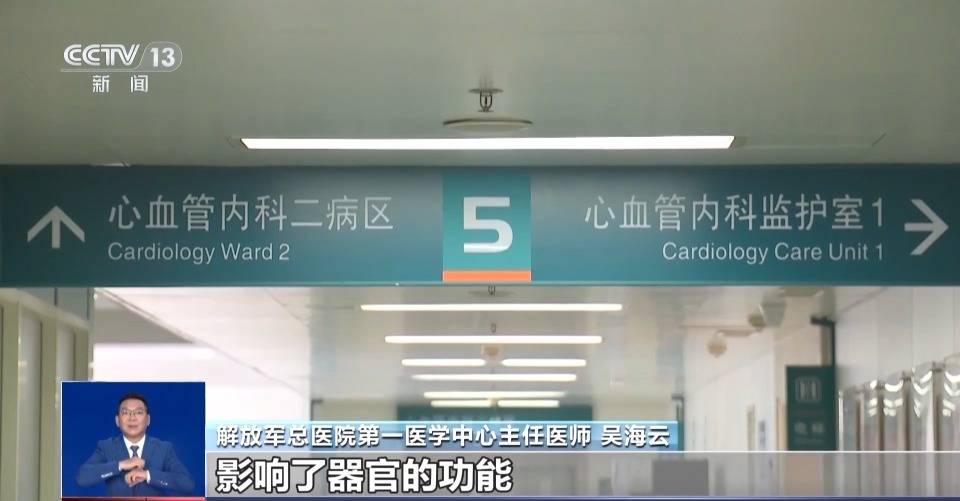The current period is in the midst of the hottest days of the year, with many parts of the country experiencing high temperatures. The highest temperature in Changsha on the 24th reached 40.4℃, breaking the local record for the highest temperature in July.
The unbearable heat in many places has led to an increase in the number of heatstroke cases being treated in hospitals. Some patients even have body temperatures exceeding 40 degrees, known as heat exhaustion, which can be life-threatening.
Recently, there has been a saying circulating on the internet: “Heatstroke is caused by the same fever as bacteria or virus infections. As long as you take antipyretic drugs to reduce the fever, you will get better.” Is there any scientific basis for this statement? Let’s find out together.
“Heatstroke” requires immediate physical cooling as heat exhaustion can be life-threatening.
How does heatstroke actually occur, and how should it be cooled down?
Heatstroke is an acute illness characterized mainly by central nervous system or cardiovascular dysfunction due to dysfunction of the body’s temperature regulation center or sweat gland failure, as well as excessive loss of water and electrolytes. It is mostly caused by the body’s exposure to high temperatures and poorly ventilated environments, where the body cannot adapt to or withstand the high temperatures, leading to more heat generation internally than heat dissipation externally.
Chief Physician Wu Haiyun, Director of the First Medical Center of the PLA General Hospital: The essence of heatstroke is that due to the high temperature of the environment, especially in situations where the temperature and humidity are high, there is a hindrance to heat dissipation in the body, resulting in an increase in body temperature and affecting organ functions. Therefore, the treatment of heatstroke involves immediate physical cooling.
Heatstroke is classified into prodromal heatstroke, mild heatstroke, and severe heatstroke, with severe heatstroke further classified as heat cramps, heat exhaustion, and heatstroke, with heatstroke being the most serious condition.
Chief Physician Wu Haiyun, Director of the First Medical Center of the PLA General Hospital: The brain is most affected by heatstroke, leading to death mainly due to brain damage. Heatstroke can lead to a coma in a matter of minutes or even half an hour. Once a coma occurs, it is very dangerous, with a high mortality rate.
Antipyretic drugs do not reduce body temperature and cannot alleviate symptoms of “heatstroke.”
Experts emphasize that although both heatstroke and fever lead to an increase in body temperature, the causes are different. Heatstroke should not be treated indiscriminately with drugs, especially antipyretic drugs.
Chief Physician Wu Haiyun, Director of the First Medical Center of the PLA General Hospital: In general, fever is caused by inflammation. Antipyretic drugs, more accurately termed as anti-inflammatory drugs, reduce or inhibit the inflammatory factors that cause fever; they do not have a cooling effect.
Unlike fever caused by infections, heatstroke-induced fever results from a problem in the body’s heat dissipation center, making it unable to dissipate heat through sweating. Taking antipyretic drugs cannot restore normal heat dissipation function in the body and can actually worsen symptoms, damage organs, and delay rescue efforts.
Experts recommend that the fastest way to relieve symptoms of heatstroke or heatstroke is:
Firstly, take the patient to a cool, ventilated place away from direct sunlight. Secondly, quickly cool the patient down with water below 7℃, wipe their body, or even immerse them in water. Thirdly, administer cool or ice water to rapidly reduce body temperature.
If signs of unconsciousness appear, seek medical attention promptly.
Are physically fit and robust individuals more prone to heatstroke?
Meanwhile, there is also a saying online that “physically fit and robust individuals are more prone to heatstroke.” Is this true?
Experts state that everyone exposed to high temperatures is at risk of heatstroke. Children, pregnant women, the elderly, individuals with chronic underlying diseases, and those with compromised immune functions are at higher risk. Physically fit individuals can also experience heatstroke if they engage in vigorous exercise or work in high temperatures.
Many people cannot do without air conditioning in the summer. There is a rumor online that suggests turning on the air conditioning, then turning it off once the room is cool, and turning it on again when it gets hot, repeating this cycle can save electricity. Is this true? In fact, frequent turning on and off of the air conditioner consumes more electricity. Although the air conditioner is not in operation when not running, the energy consumption during the startup phase is high. If the number of restarts is high, the total energy consumption will exceed that of leaving the air conditioner on continuously.
(Source: Beijing Daily)


